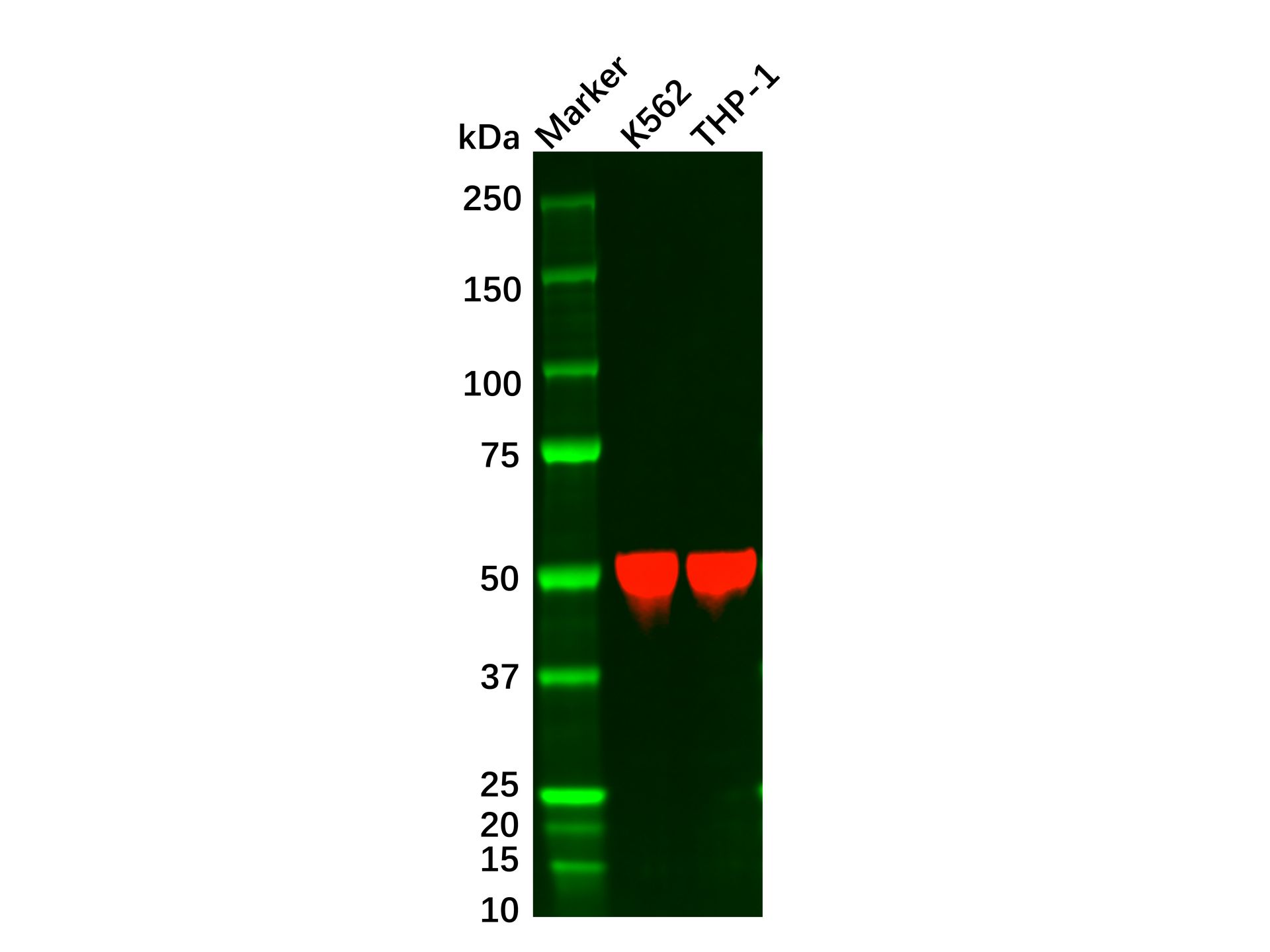Determine the necessary mass, volume, or concentration for preparing a solution.
This is a demo store. No orders will be fulfilled.
| SKU | Size | Availability |
Price | Qty |
|---|---|---|---|---|
|
Ab091046-10μl
|
10μl |
5
|
$69.90
|
|
|
Ab091046-50μl
|
50μl |
2
|
$207.90
|
|
|
Ab091046-100μl
|
100μl |
1
|
$297.90
|
|
|
Ab091046-1ml
|
1ml |
Available within 8-12 weeks(?)
Production requires sourcing of materials. We appreciate your patience and understanding.
|
$2,697.90
|
|
Recombinant; Rabbit anti Human ARRB1 Antibody; WB, IHC; Unconjugated
| Product Name | Recombinant ARRB1 Antibody - Primary antibody, specific to ARRB1, Rabbit IgG |
|---|---|
| Synonyms | ARB1 | ARR1 | ARRB1 | ARRB1_HUMAN | Arrestin 2 | Arrestin beta 1 | Arrestin beta-1 | Beta-arrestin-1 | ARB1 antibody | ARR1 antibody | ARRB1 antibody | ARRB1_HUMAN antibody | Arrestin 2 antibody | Arrestin beta 1 antibody | Arrestin beta-1 antibody | Beta |
| Specifications & Purity | ExactAb™, Validated, Recombinant, 1.2 mg/mL |
| Host species | Rabbit |
| Specificity | ARRB1 |
| Immunogen | A synthetic peptide derived from human ARRB1 (AA 1-48). |
| Positive Control | WB: K562 ,THP-1 lysates. IHC: Human kidney tissue. |
| Conjugation | Unconjugated |
| Grade | ExactAb™, Recombinant, Validated |
| Product Description |
Rabbit anti Human ARRB1 Antibody, Recombinant, could be used for WB, IHC and so on. |
| Isotype | Rabbit IgG |
|---|---|
| SDS-PAGE | 150 kDa |
| Purification Method | Antigen affinity purification |
| Shape | Liquid |
| Concentration | 1.2 mg/mL |
| Storage Temp | Store at -20°C,Avoid repeated freezing and thawing |
| Shipped In | Ice chest + Ice pads |
| Stability And Storage | Store at 4°C short term (1-2 weeks). Store at -20°C long term (24 months). Upon receipt, it is recommended to aliquot. Avoid freeze/thaw cycle. |
| Activity Type | Activity Value -log(M) | Mechanism of Action | Activity Reference | Publications (PubMed IDs) |
|---|
| Mechanism of Action | Action Type | target ID | Target Name | Target Type | Target Organism | Binding Site Name | References |
|---|

Recombinant ARRB1 Antibody (Ab091046) - Western Blot
All lanes: Recombinant ARRB1 Antibody (Ab091046) at 1/1000 dilution
Samples: Lysates at 20 µg per lane
Secondary: Goat Anti-Rabbit IgG H&L (HRP) (Ab170144) at 1/50000 dilution
Predicted band size: 50 kDa
Observed band size: 52 kDa

Recombinant ARRB1 Antibody (Ab091046) - IHC
Immunohistochemistry analysis of paraffin-embedded Human kidney using Recombinant ARRB1 Antibody (Ab091046). High-pressure and temperature Sodium Citrate pH 6.0 was used for antigen retrieval.
| Application | Dilution info |
|---|---|
| WB | 1/500-1/1000 |
| IHC | 1/50 - 1/100 |
Find and download the COA for your product by matching the lot number on the packaging.
| Lot Number | Certificate Type | Date | Item |
|---|---|---|---|
| Certificate of Analysis | Aug 14, 2023 | Ab091046 | |
| Certificate of Analysis | Aug 14, 2023 | Ab091046 |

Starting at $69.90